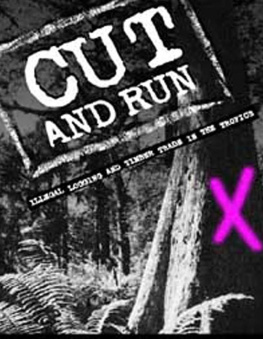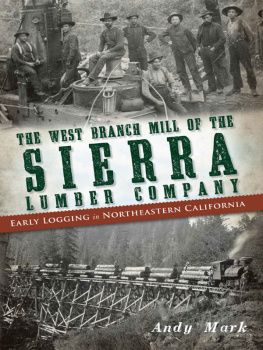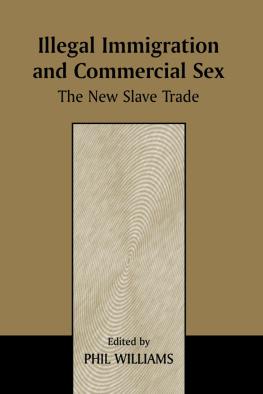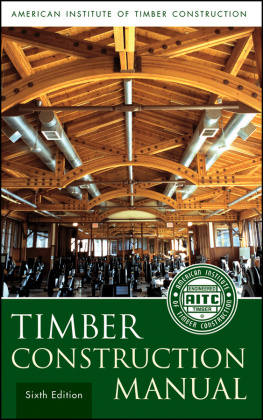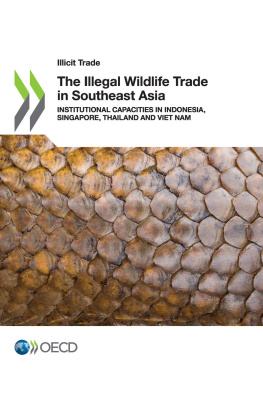Rob Glastra - Cut and Run: Illegal Logging and Timber Trade in the Tropics
Here you can read online Rob Glastra - Cut and Run: Illegal Logging and Timber Trade in the Tropics full text of the book (entire story) in english for free. Download pdf and epub, get meaning, cover and reviews about this ebook. year: 1999, publisher: IDRC, genre: Politics. Description of the work, (preface) as well as reviews are available. Best literature library LitArk.com created for fans of good reading and offers a wide selection of genres:
Romance novel
Science fiction
Adventure
Detective
Science
History
Home and family
Prose
Art
Politics
Computer
Non-fiction
Religion
Business
Children
Humor
Choose a favorite category and find really read worthwhile books. Enjoy immersion in the world of imagination, feel the emotions of the characters or learn something new for yourself, make an fascinating discovery.
- Book:Cut and Run: Illegal Logging and Timber Trade in the Tropics
- Author:
- Publisher:IDRC
- Genre:
- Year:1999
- Rating:3 / 5
- Favourites:Add to favourites
- Your mark:
- 60
- 1
- 2
- 3
- 4
- 5
Cut and Run: Illegal Logging and Timber Trade in the Tropics: summary, description and annotation
We offer to read an annotation, description, summary or preface (depends on what the author of the book "Cut and Run: Illegal Logging and Timber Trade in the Tropics" wrote himself). If you haven't found the necessary information about the book — write in the comments, we will try to find it.
Rob Glastra: author's other books
Who wrote Cut and Run: Illegal Logging and Timber Trade in the Tropics? Find out the surname, the name of the author of the book and a list of all author's works by series.
Cut and Run: Illegal Logging and Timber Trade in the Tropics — read online for free the complete book (whole text) full work
Below is the text of the book, divided by pages. System saving the place of the last page read, allows you to conveniently read the book "Cut and Run: Illegal Logging and Timber Trade in the Tropics" online for free, without having to search again every time where you left off. Put a bookmark, and you can go to the page where you finished reading at any time.
Font size:
Interval:
Bookmark:

Edited by Rob Glastra
INTERNATIONAL DEVELOPMENT RESEARCH CENTR E
Ottawa Cairo Dakar Johannesburg Montevideo Nairobi New Delhi Singapore
Published by the International Development Research Centre PO Box 8500, Ottawa, ON, Canada K1G 3H9
Friends of the Earth International 1999
Main entry under title : Cut and run : illegal logging and timber trade in the tropics Includes bibliographical references.
ISBN 0-88936-862-7
- Logging Corrupt practices Tropics.
- Lumber trade Corrupt practices Tropics.
- Deforestation Tropics.
- Forests and forestry Tropics.
- Rain forests Tropics.
I. Glastra, Rob.
II. International Development Research Centre (Canada).
III. Friends of the Earth International.
SD538.C87 1998 634.980913 C99-980017-5
All rights reserved. No part of this publication may be reproduced, stored in a retrieval system, or transmitted, in any form or by any means, electronic, mechanical, photocopying, or otherwise, without the prior permission of the International Development Research Centre. Mention of a proprietary name does not constitute endorsement and is given only for information. The views expressed are those of the author(s) and do not necessarily represent those of the International Development Research Centre. A microfiche edition is available
IDRC Books endeavours to produce environmentally friendly publications. All paper used is recycled as well as recyclable. All inks and coatings are vegetable-based products.

Foreword David B. Brooks (IDRC) vii Preface xi Acknowledgments xv
Chapter 1
Deforestation, forest degradation, and the timber industry Changing global trade patterns Illegality and unsustainability: general observations and
regional summaries Regional summaries National and international regulatory mechanisms Conclusions
Chapter 2
Illegal logging on the government agenda Illegality and unsustainability How concession-management plans have failed The cost structure of logging Making laws and regulations more feasable Planning forest land use Mahogany and CITES Information tools Fines and enforcement costs: a vicious circle East Asian loggers: a new threat Peru and the logging frontier
The brazil nut tree: the next logging victim? Chapter 3
Background Former (pre-1994) forest legislation in theory and practice New (1994) forest law How national newspapers perceive the problem Types and occurrence of illegal practices Motivations and perspectives of the principal actors Some impacts of illegal logging Recommendations
Chapter 4
Problems Impacts Managing illegal logging in Ghana Local communities and illegal logging Timber harvesting Government policies Corruption Productivity loss
Chapter 5
Working with institutions. The Alto Paraguay case Illegal log trafficking into Brazil Recommendations
Chapter 6
Contextual factors: similarities and differences among the four countries
| Local and indigenous communities and illegal logging Specific impacts of illegal logging and timber trade The importance of local NGOs as watchdogs | 85 86 87 |
|---|---|
| Chapter 7 Conclusions and Recommendations: Arresting the Chase for Quick Profits Conclusions Recommendations | 89 94 |
| Appendix 1 Resolution on Illegal Timber Trade, Adopted at the 1996 IUCN World Conservation Congress | |
| Appendix 2 Friends of the Earth International | |
| Appendix 3 Acronyms and Abbreviations | |
| Bibliography |

Forests are arguably the worst managed ecosystems on the planet. Where they are not regarded as barriers to economic growth, and therefore cleared to make way for agricultural or urban expansion, they are exploited by governments and by corporations in the name of economic growth, and just as effectively destroyed or degraded. Even when people live at a considerable distance from any wilderness, as they typically do in developed countries, the assault on forests continues as they receive the effluents of our affluent lifestyles in the form of acid rain and heavy metals. Even in less developed countries, where people live closer to the forests, both timber and nontimber resources have been extracted to the point where survival of the forest itself is in question. Living in conditions of poverty, men (but not women) have been quite prepared to sell their forest birthright for a mess of potage in the form of wages.
It was not always so. Not so long ago, forests received a great deal of protection. This was not because human beings were any more ethical in the past or because, living closer to nature, they possessed any innate sense of conservation. Rather, it was because forests were widely regarded as dangerous places untracked areas where one could lose ones way forever, be torn apart by vicious beasts, or perhaps stumble inadvertently into the home of a demon, never again to emerge, at least not as a human being. Only the very brave, the very foolish, or those living outside the law went into the forest. Under these
conditions, the forest was exploited, but minimally and only around its edges.
Today, forests have been largely tamed. One no longer has to be brave at all to go into the forest, as is evident by the enormous number of people who use the forest for day picnics or longer trips into remote areas. Modern equipment and modern communications have reduced the dangers enormously. Though some of those who enter the forest may still be foolish, they are more likely to suffer from mosquitoes or sore legs than to get lost or eaten, much less possessed by a demon.
In the tropics, the forests of today resemble those of the past in one respect: they remain a target for outlaws. But even here, differences are greater than similarities. The outlaws of old lived as small bands and exploited the forest mainly as a hideout and for subsistence rather than as a source of wealth. It is just the reverse with todays forest outlaws; few of them live in the forest and fewer still use it for subsistence. Rather, for them, the forest is exclusively a source of wealth in some cases, enormous wealth. And, coming as they do with huge chain saws, heavy equipment, large trucks, these outlaws are hardly hiding.
If forests are among the worst managed ecosystems on our planet, they are also among the most studied. The traditional knowledge of forest dwellers and of naturalists around the world is of course profound. Equally profound is the industrial and academic knowledge about forests, and we have trade journals and professional journals in a score of languages. Every year, hundreds of students graduate from courses in forest management at all scales from wood lot to commercial timber, and at all levels from informal classes to advanced university degrees. In recent years, new disciplines, such as forest ecology and recreation studies, have added to our store of knowledge about forests. As a result, we know a great deal about how forests grow and how they react to stress, including both natural stress and the stress imposed by human action. We also know a great deal about forest management and how much wood and other products are taken from the forests, the firms active in forestry, and the uses of forest products.
Font size:
Interval:
Bookmark:
Similar books «Cut and Run: Illegal Logging and Timber Trade in the Tropics»
Look at similar books to Cut and Run: Illegal Logging and Timber Trade in the Tropics. We have selected literature similar in name and meaning in the hope of providing readers with more options to find new, interesting, not yet read works.
Discussion, reviews of the book Cut and Run: Illegal Logging and Timber Trade in the Tropics and just readers' own opinions. Leave your comments, write what you think about the work, its meaning or the main characters. Specify what exactly you liked and what you didn't like, and why you think so.

